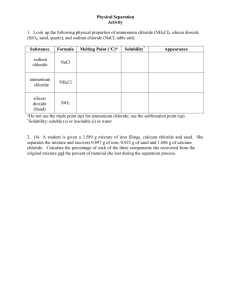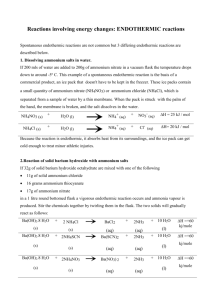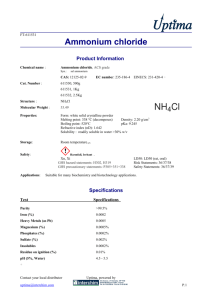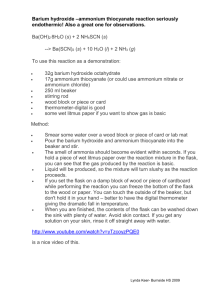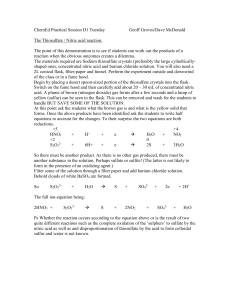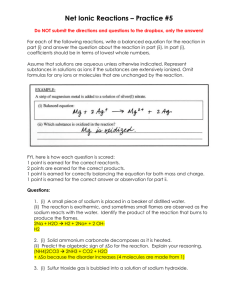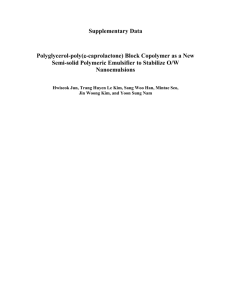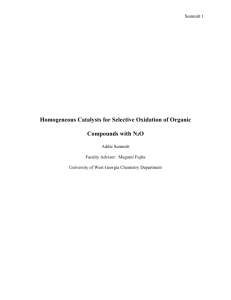NO2 – N2O4 Equilibrium: Temperature and LeChatelier`s Principle
advertisement
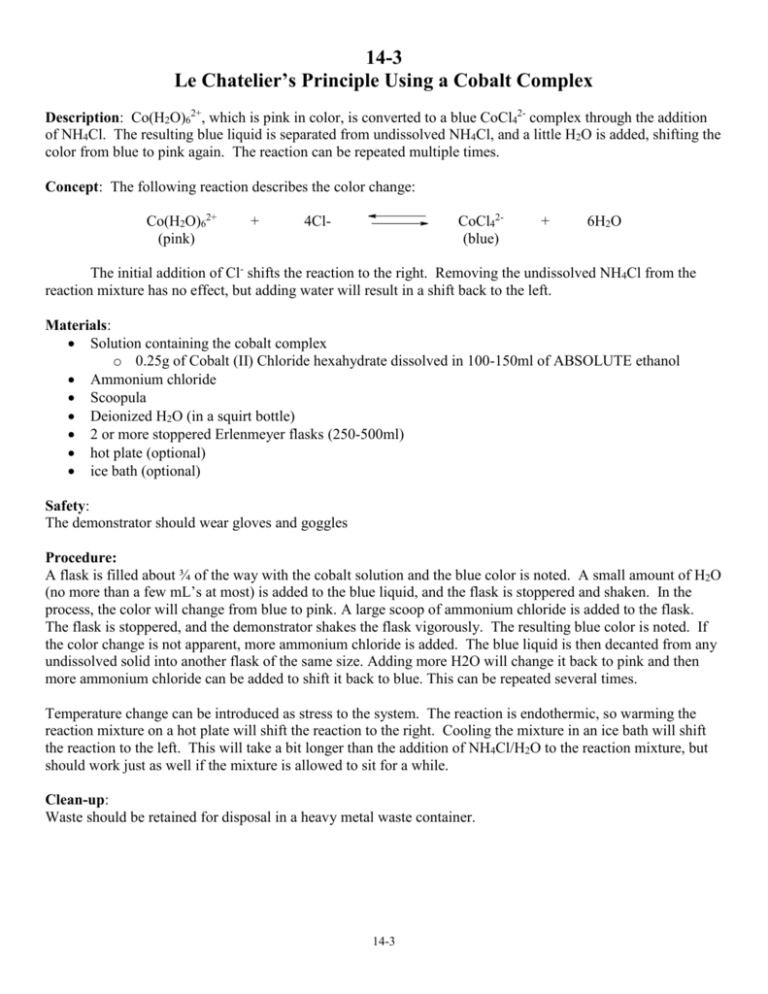
14-3 Le Chatelier’s Principle Using a Cobalt Complex Description: Co(H2O)62+, which is pink in color, is converted to a blue CoCl42- complex through the addition of NH4Cl. The resulting blue liquid is separated from undissolved NH4Cl, and a little H2O is added, shifting the color from blue to pink again. The reaction can be repeated multiple times. Concept: The following reaction describes the color change: Co(H2O)62+ (pink) + CoCl42(blue) 4Cl- + 6H2O The initial addition of Cl- shifts the reaction to the right. Removing the undissolved NH4Cl from the reaction mixture has no effect, but adding water will result in a shift back to the left. Materials: Solution containing the cobalt complex o 0.25g of Cobalt (II) Chloride hexahydrate dissolved in 100-150ml of ABSOLUTE ethanol Ammonium chloride Scoopula Deionized H2O (in a squirt bottle) 2 or more stoppered Erlenmeyer flasks (250-500ml) hot plate (optional) ice bath (optional) Safety: The demonstrator should wear gloves and goggles Procedure: A flask is filled about ¾ of the way with the cobalt solution and the blue color is noted. A small amount of H2O (no more than a few mL’s at most) is added to the blue liquid, and the flask is stoppered and shaken. In the process, the color will change from blue to pink. A large scoop of ammonium chloride is added to the flask. The flask is stoppered, and the demonstrator shakes the flask vigorously. The resulting blue color is noted. If the color change is not apparent, more ammonium chloride is added. The blue liquid is then decanted from any undissolved solid into another flask of the same size. Adding more H2O will change it back to pink and then more ammonium chloride can be added to shift it back to blue. This can be repeated several times. Temperature change can be introduced as stress to the system. The reaction is endothermic, so warming the reaction mixture on a hot plate will shift the reaction to the right. Cooling the mixture in an ice bath will shift the reaction to the left. This will take a bit longer than the addition of NH4Cl/H2O to the reaction mixture, but should work just as well if the mixture is allowed to sit for a while. Clean-up: Waste should be retained for disposal in a heavy metal waste container. 14-3
